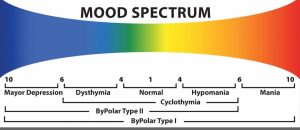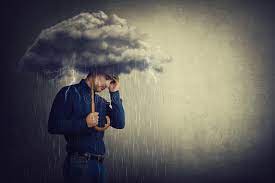Category: Anxiety Disorder
 by Jessica Kraft, MSN, PMHNP-BC
by Jessica Kraft, MSN, PMHNP-BC
Anxiety and mood disorders are amongst the most commonly diagnosed mental health conditions in the United States. While many find successful treatment through various psychotherapies or medications targeted at managing anxiety and depression, no medication will magically take away all anxiety or life stressors and it is not uncommon to experience breakthrough anxiety or symptoms of depression even while under the care of mental health professionals. In today’s hectic world it can be challenging to juggle daily responsibilities and find ways and time to take a step back and practice mindfulness or focus on self-care. This article explores different mindfulness activities and alternative therapies, some of the benefits they illustrate, and how to include them in our day-to-day routines.
Meditation: Meditation has been practiced for thousands of years and is considered one of the oldest spiritual practices in ancient India and China. While it can be challenging to find an agreed upon definition for meditation, in general it is agreed upon that meditation is a practice and form of mental training with the goal of calming the mind (Wang et al., 2022). Meditation can look different to different people and can be practiced in as little as a few minutes every day.
Yoga: Yoga is an ancient spiritual practice with roots in Indian culture and is an alternative therapy often combined with meditation that focuses on breathwork and the adoption of physical postures. There are multiple style of yoga that differ in intensity and length of time, but multiple individual studies and systematic reviews have concluded that yoga can benefit those struggling with depression with symptom reduction seen with 60-minute sessions per week (Saeed et al., 2019).
Exercise: There are numerous studies and clinical trials showing the benefits of exercise related to mental health, particularly for those who struggle with anxiety and depression. A meta-review examining the relationship between anxiety disorders and physical activity (especially aerobic and resistance exercises) with over 69,000 participants showed that on average participants reported significantly reduced anxiety over a 3-year period when engaging in physical activity on a regular basis. Analysis examining sedentary behavior showed an increased risk of depression over time compared to those who engaged in more physical lifestyle activities (Firth et al., 2020). While there can be limitations in studies related to exercise types, additional therapies, and other variables there is one thing that remains consistent: no trials have shown that physical activity worsens anxiety or depression (Saeed et al., 2019).
While mindfulness activities and alternative therapies sound great on paper, they can be challenging to practice regularly. Below are some tips for squeezing in mindfulness activities into a hectic schedule:
- Utilizing meditation apps. Most popular meditation apps (Calm, Headspace, Healthy Minds Program) have lengthy daily meditations, but they also include quick 1-3 minute meditations/deep breathing exercises that can easily be practiced before going to bed, before starting the work day, or to take a time out when feeling overwhelmed
- Find exercise you enjoy doing. Motivation to exercise can be challenging enough, but when it is for an activity you don’t even enjoy this can be even more challenging. Find an activity or sport that you actually enjoy or look forward to doing and this will help with consistency, especially if you are able to engage in the activity with friends or family and turn it into a social or group event
- Make slow, incremental changes to routine. It’s not uncommon to make a self-care plan including things like exercising daily, meditating daily, and making dietary changes. When we try to make multiple changes like this overnight it is easy to get discouraged if we miss a day and sometimes, we don’t even get back to it. Focusing on one change at a time and incorporating it into your routine more slowly helps with habit changing
- In short, set yourself up for success with the four laws of behavior change. 1) make it obvious – if you want to go to the gym after work every day pack your bag the night before, 2) make it attractive – get yourself a new pair of shoes or a new workout outfit, 3) make it easy – start with a few minutes per day, and 4) make it satisfying – set up incentives to motivate yourself and keep it going (Clear, 2022)
Sources:
Clear, J. (2022). Atomic habits: An easy & proven way to build Good Habits & Break Bad Ones: Tiny Changes, remarkable results. Cornerstone Press.
Firth, J., Solmi, M., Wootton, R.E., Vancampfort, D., Schuch, F.B., Hoare, E., Gilbody, S., Torous, J., Teasdale, S.B., Jackson, S.E., Smith, L., Eaton, M., Jacka, F.N., Veronese, N., Marx, W., Ashdown-Franks, G., Siskind, D., Sarris, J., Rosenbaum, S., Carvalho, A.F. and Stubbs, B. (2020), A meta-review of “lifestyle psychiatry”: the role of exercise, smoking, diet and sleep in the prevention and treatment of mental disorders. World Psychiatry, 19: 360-380. https://doi.org/10.1002/wps.20773
Saeed SA, Cunningham K, Bloch RM. Depression and Anxiety Disorders: Benefits of Exercise, Yoga, and Meditation. Am Fam Physician. 2019 May 15;99(10):620-627. PMID: 31083878.
Wang, Zanyi1,; Rawat, Vikas1; Yu, Xinli2; Panda, Ramesh Chandra3. Meditation and its practice in Vedic scriptures and early Taoism scriptures. Yoga Mimamsa 54(1):p 41-46, Jan–Jun 2022. | DOI: 10.4103/ym.ym_48_22 (https://journals.lww.com/yomi/fulltext/2022/54010/Meditation_and_its_practice_in_Vedic_scriptures.8.aspx)

















